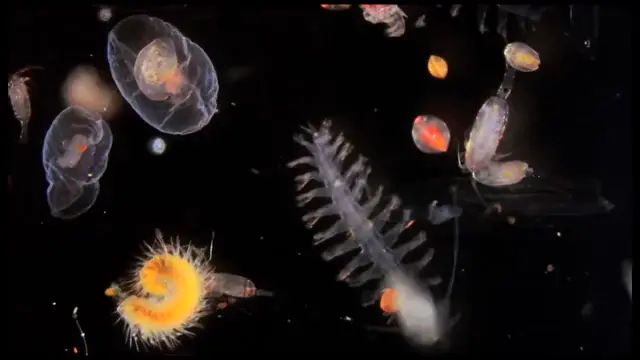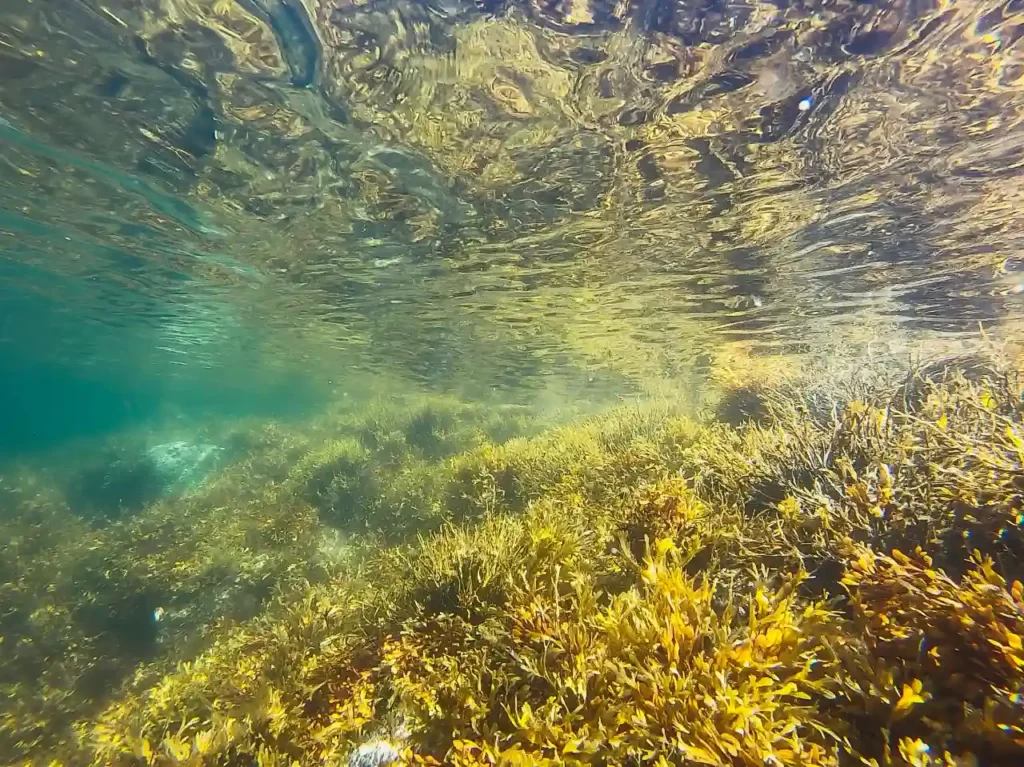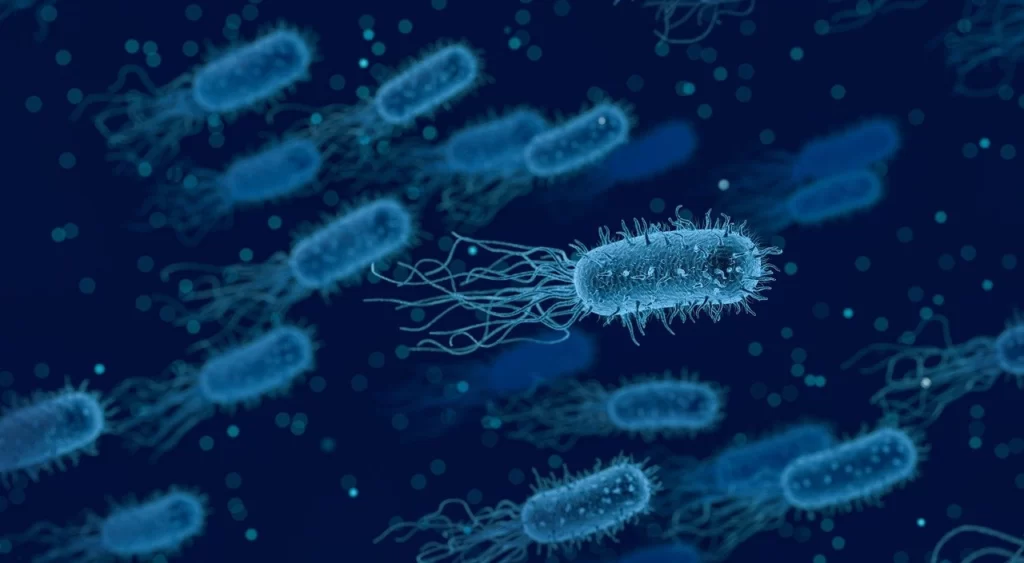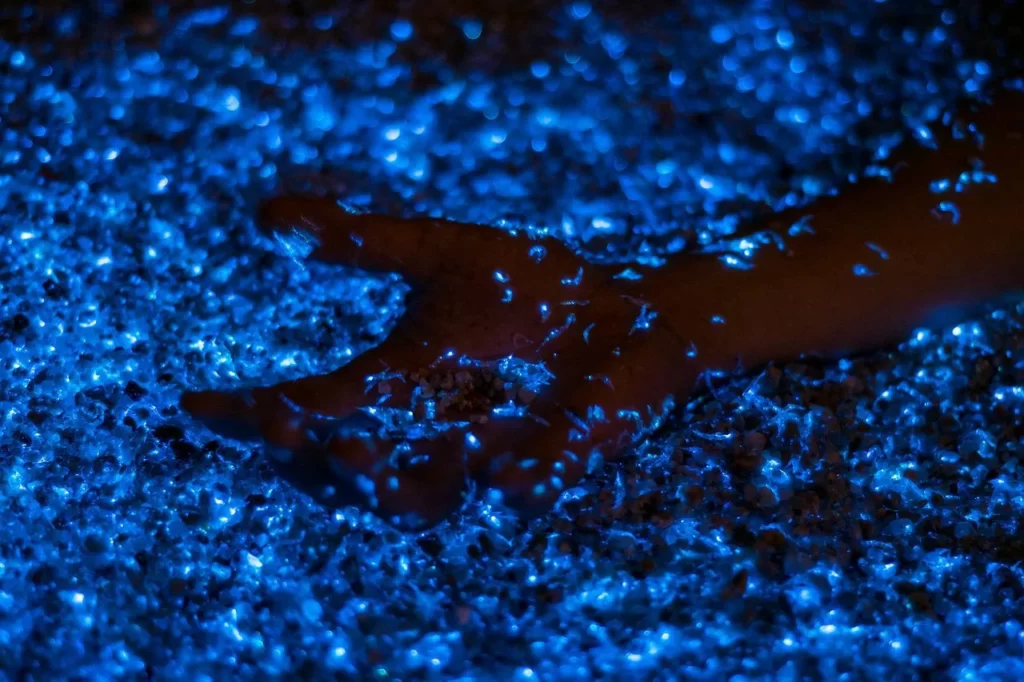“Plankton” is a name that encompasses an unimaginable and varied amount of incredible-shaped, multicolored organisms that interact with each other.
It ranges from microscopic organisms like “diatoms” to slender animals several meters in length called “siphonophores,” which are displayed as coiled rings, iridescent spheres, luminous geometric figures…
Plankton is considered the most diverse and ancient ecosystem on the planet, and its members are essential for life by producing oxygen and being the base of the food chain.
Dive into the plankton community and discover which organisms are part of it, what types of plankton exist, what characteristics they share, where they are found…
Don’t go away!
What is plankton?
It is the set of animal and plant living beings that live floating or swimming passively in freshwater (rivers, lakes, ponds…) and marine waters, and although some are capable of moving, they do not resist water currents.
It includes both adult organisms and some in their larval stage, mostly microscopic, and can be part of it permanently or temporarily.
Did you know...? There are between 10,000 and 100,000 million living organisms in every liter of seawater! Click To Tweet
What does “plankton” mean?
The term “plankton” comes from the Greek word “planktós” meaning “wandering,” in reference to the animal and plant organisms that drift on the water’s surface.
How is plankton classified?
Based on the organisms that comprise it, four types of plankton are differentiated: phytoplankton, zooplankton, bacterioplankton, and virioplankton.
Phytoplankton
Refers to plant plankton and is associated with microalgae, which are unicellular organisms (formed by a single cell), simple, and microscopic in size, such as diatoms (about 80%) and dinoflagellates.
Diatoms have a cover (frustule) formed by two valves or shells that can be rounded or elongated, displaying decorations.
Dinoflagellates possess flagella (whip-like movable appendages) and exhibit greenish and yellowish colorations.
Like all plants, the microalgae present in phytoplankton produce their own food (autotrophs) through the process of photosynthesis, and in doing so, generate more than half of the planet’s oxygen! and various vital organic compounds.
Therefore, phytoplankton is found near the water’s surface to absorb as much sunlight as possible.
Additionally, phytoplankton is the primary food source for zooplankton and other aquatic species.
Plankton | What it is, classification, characteristics, habitat, diet, reproduction, and importance Click To TweetZooplankton
Is the animal nature plankton; it is a very varied group, made up of individuals who feed on other organisms (heterotrophs).
It is found throughout the oceanic water column, although it is more numerous in shallower areas, as this is where food is found.
Among its representatives are: protozoans (foraminifera, radiolarians, and tintinnids), hydromedusae, siphonophores, ctenophores, and bryozoan larvae.
Worms also form part of the zooplankton, with their larvae, some adult polychaetes and chaetognaths, as well as larvae of mollusks of gastropods and bivalves.
Among crustaceans are: copepods, cladocerans, and their larvae; chordates are present with tiny animals called salps and doliolids, and echinoderms with their larval phases.
Also found in zooplankton are the eggs and larvae of fish (ichthyoplankton), and some adult species (genus Aphia).
Some zooplankton organisms do not have great mobility, but others move great distances and to avoid sinking to the bottom, they have mechanisms or substances that help them float.
Plankton | What it is, classification, characteristics, habitat, diet, reproduction, and importance Click To TweetBacterioplankton
It consists of bacteria (cyanobacteria) and archaea that move in the water column. Despite being very small, they are abundant, especially in tropical seas.
It is further subdivided into: photosynthetic bacterioplankton and heterotrophic bacterioplankton.
The former includes organisms that obtain energy from photosynthesis, such as cyanobacteria (Prochlorococcus and Synechococcus); heterotrophic bacterioplankton comprises members that obtain energy by consuming organic material produced by other organisms.
Bacterioplankton is of great importance for the decomposition of matter and the flow of nutrients in the marine environment, playing a fundamental role in the carbon cycle and other biogeochemical cycles (nitrogen, phosphorus, and sulfur).
Virioplankton
Refers to plankton made up of aquatic viruses, mainly bacteriophages (which infect and destroy marine bacteria) and, to a lesser extent, viruses of eukaryotic algae.
These viruses participate in the remineralization of nutrients, in biogeochemical cycles, are part of the plankton food webs, and are essential to prevent explosions of bacterial populations.
Did you know...? Marine viruses, although microscopic and essentially unnoticed by scientists until recently, are the most abundant and diverse biological entities in the ocean. Click To TweetOther classifications
Plankton can also be classified according to other criteria, such as: the time organisms inhabit it, their size, the aquatic environment, horizontal distribution, and depth.
According to the time organisms live
Based on the time that organisms are part of the plankton, it can be divided into: holoplankton and meroplankton.
Holoplankton
Is represented by zooplankton organisms that spend their entire life as plankton formers, such as copepods (tiny crustaceans).

Meroplankton
It is associated with coastal areas and refers to organisms that are part of the plankton only at a certain stage of life, generally during the larval phase or juvenile period, and upon becoming adults, they live on the seabed.
This is the case with starfish, barnacles, and jellyfish.
Based on the size of the species
According to the size of the species that are part of the planktonic community, it is classified into: megaplankton, macroplankton, mesoplankton, microplankton, and nanoplankton.
Megaplankton
It is the part of plankton formed by organisms larger than 20 centimeters, such as jellyfish and colonies of tunicates.
Macroplankton
Consists of animals whose size varies between 2 and 20 centimeters, like jellyfish and fry.
Mesoplankton
The area of plankton that includes species of variable size (between 0.2 and 20 millimeters), such as copepods and worms.
Microplankton
Plankton with microscopic animal species (between 20-200 microns), among them: diatoms, peridiniums, tintinnids, radiolarians, ostracods, and cladocerans.
Nanoplankton
Refers to the zone of plankton represented by ultramicroscopic species (between 2-20 microns) known as “phytoflagellates.”
Based on the aquatic environment
Depending on the aquatic environment in which it is found, plankton is divided into: freshwater, neritic, and oceanic.
Freshwater
It is the plankton that inhabits fresh waters, such as rivers, lakes, ponds, water-storing plants (phytotelmata) like bromeliads, holes in tree trunks…
Marine
Covers plankton that is distributed in marine environments and estuaries.
Based on horizontal distribution
Plankton is distributed horizontally in different ways and can be: neritic and oceanic.
Neritic
Includes plankton located on the continental shelf, from the shallow maritime zone up to 200 meters deep.
Oceanic
Is the plankton found outside the continental shelf.
Based on depth
Plankton can be distributed at different depths; based on this, it can be classified into: neuston, epipelagic, mesopelagic, bathypelagic, and hadopelagic.
Neuston
Corresponds to zooplankton organisms that live right on the water’s surface.
Epipelagic
Is the plankton that goes from the surface to a depth of 50 meters; it is an area that receives abundant sunlight, has low atmospheric pressure, and stable temperature, ideal for photosynthesis, thus supporting a rich and diverse plankton.
Mesopelagic
Corresponds to plankton located between approximately 50 and 200 meters; it is a less illuminated area; plant species are in smaller proportion.
Infrapelagic
Represents plankton between 200 and 600 meters deep; in this zone, sunlight practically does not reach, so plant species (phytoplankton) are absent.
Bathypelagic
Refers to plankton located between 600 and 2,500 meters deep, populated by planktonic animals, mainly tiny crustaceans (copepods) like krill.
Hadopelagic
Is the zone of plankton that goes from 2,500 meters to deep areas; it is a twilight zone, with very particular conditions and few animal species, like ostracods.
Did you know...? It has been shown that some species of phytoplankton (dinoflagellates and diatoms) disperse through the air above the sea. Click To TweetWhat are the differences between phytoplankton and zooplankton?
Primarily, phytoplankton refers to plankton made up of plant organisms, while zooplankton encompasses animal species.
Phytoplankton is always near the water’s surface because it needs light for photosynthesis; on the other hand, zooplankton can be found at various depths, reaching down to the deep zones.
Although organisms in both groups are generally microscopic, in zooplankton, there are some individuals that can be seen with the naked eye.
At the cellular organization level, phytoplankton consists of unicellular organisms (with a single cell), while zooplankton groups both unicellular and multicellular organisms (multiple cells).
Finally, phytoplankton organisms generate their own food through sunlight and the process of photosynthesis (autotrophs); zooplankton species mainly act as herbivores and carnivores.
What characteristics does plankton have?
Despite the diversity of animal and plant species that make up plankton, there are certain characteristics or properties that define it, such as:
- Microscopic size, as most of the organisms that compose it are tiny (average size between 60 microns and 1 millimeter).
- Buoyancy, thanks to the elimination or minimization of heavy elements, like shells (if they have them, they are very thin), the development of branches, and water-rich tissues.
- Drifting movement; although some animal species can move, most of them do not resist water currents.
- Transparency, making it difficult to detect most of the present organisms; this serves as a defense mechanism.
- Bioluminescence; some species are capable of producing light, which serves to deter predators and for reproduction.
- Vertical migration; many animal species move vertically from deeper areas to the surface to search for food and then return to the same area.
- Variable distribution, depending on the availability of sunlight, nutrients, temperature, salinity, resulting in different types of plankton.
- Development of sense organs adapted to the environment; with the development of appendages and tactile organs, tentacles, balance organs…
What is gelatinous plankton?
It is a whitish-looking mass made up of planktonic animals with a gelatinous body (jellyfish, salps, ctenophores, siphonophores…), with unique shapes that float near the coast forming long chains.
What is bioluminescent plankton?
There are some organisms that are part of the plankton and are capable of generating light! thanks to the transformation of a chemical substance (luciferin) produced in response to danger, to obtain food, or a potential mate.
This quality is called “bioluminescence,” and it creates a wonderful spectacle of underwater fireworks, where millions of microorganisms, like the dinoflagellate “Noctiluca scintillans,” flash light upon water movement.
It does not occur all the time, but when it does, the result is a mantle of fluorescent blue color, though it can display greenish, reddish, or orange colorations, and can be observed from space!
Mosquito Bay in Puerto Rico, Barú Island in Colombia, Luminous Lagoon in Jamaica, and Holbox Island in Mexico, are some of the places where you can appreciate bioluminescent plankton.
Did you know...? According to Guinness World Records, Mosquito Bay, on the island of Vieques, Puerto Rico, is the brightest bioluminescent bay on the planet, with about 480,000 living beings per liter! Click To TweetWhere does plankton live?
Plankton can be found in aquatic environments, both freshwater (rivers, lakes, ponds…) and marine, in open waters (pelagic zone) or coastal areas (neritic zone).
What do plankton organisms eat?
Planktonic organisms feed in two ways: autotrophic and heterotrophic.
Autotrophic nutrition
It is carried out by members of phytoplankton (plant plankton) and refers to the organisms’ ability to generate their food through the process of photosynthesis.
Heterotrophic nutrition
Occurs in zooplankton organisms (animal plankton) and consists of feeding on substances produced by other living beings.
Species can be herbivores and consume phytoplankton, or carnivores, feeding mainly on protozoans (copepods) that they capture by filtering water or intercepting prey.
In deep zones, there are few filter feeders, so they commonly perform vertical migrations towards shallower zones to find food.
Some organisms (like dinoflagellates) are mixotrophic, meaning they combine autotrophic and heterotrophic nutrition to optimize the use of available resources.
Did you know...? An international team of researchers, along with the Spanish National Research Council, determined that microscopic organisms that form zooplankton detect scents underwater to search for their food. Click To TweetHow does plankton reproduce?
The reproduction of planktonic organisms (both animals and plants) can be asexual, sexual, or alternate between both.
Asexual reproduction
Occurs through binary fission, multiple fission, budding, and sporulation.
Binary fission
Involves the parent cell dividing into two equal halves along a plane that can be transversal, longitudinal, or oblique, resulting in a new individual.
Multiple fission
Occurs when the nucleus of the parent cell divides several times, leading to multiple daughter cells.
Budding
Is the process by which new individuals develop as buds or sprouts on the surface of the parent cell, to later be released and live independently.
Sporulation
Is reproduction through spores.
Sexual reproduction
Involves the union of two sexual gametes or sex cells, either from two differentiated organisms (female and male) or from a single one (hermaphrodite), to give life to a new individual.
Importance of plankton
Plankton is the main food source for marine species, contributes nearly 50% of the planet’s oxygen to the atmosphere, and participates in biochemical processes, absorbing large amounts of carbon dioxide.
Additionally, it is used in biomedicine as an element to measure water toxicity since it is very sensitive to any change in the environment, and to obtain natural pigments.
In recent decades, biotechnology has developed plankton cultures to produce food used in fishing and proteins for human nutrition, considering it a rich source of minerals and vitamins.
References
Dussart, B.H. (1965). The different categories of plankton. Hydrobiologia 26, 72–74. https://doi.org/10.1007/bf00142255
EFE. (2010). Plankton smells under the sea to search for food. https://bit.ly/3auUUdh






